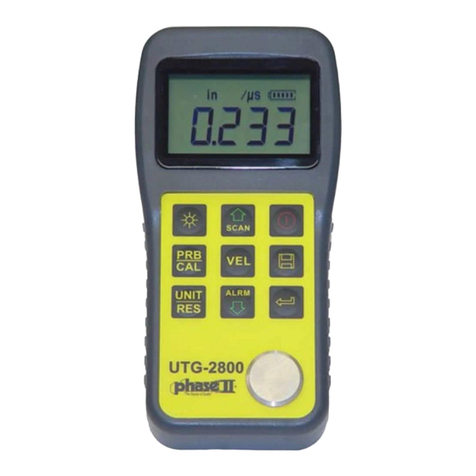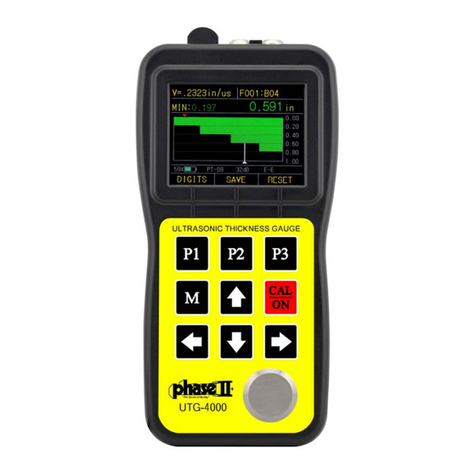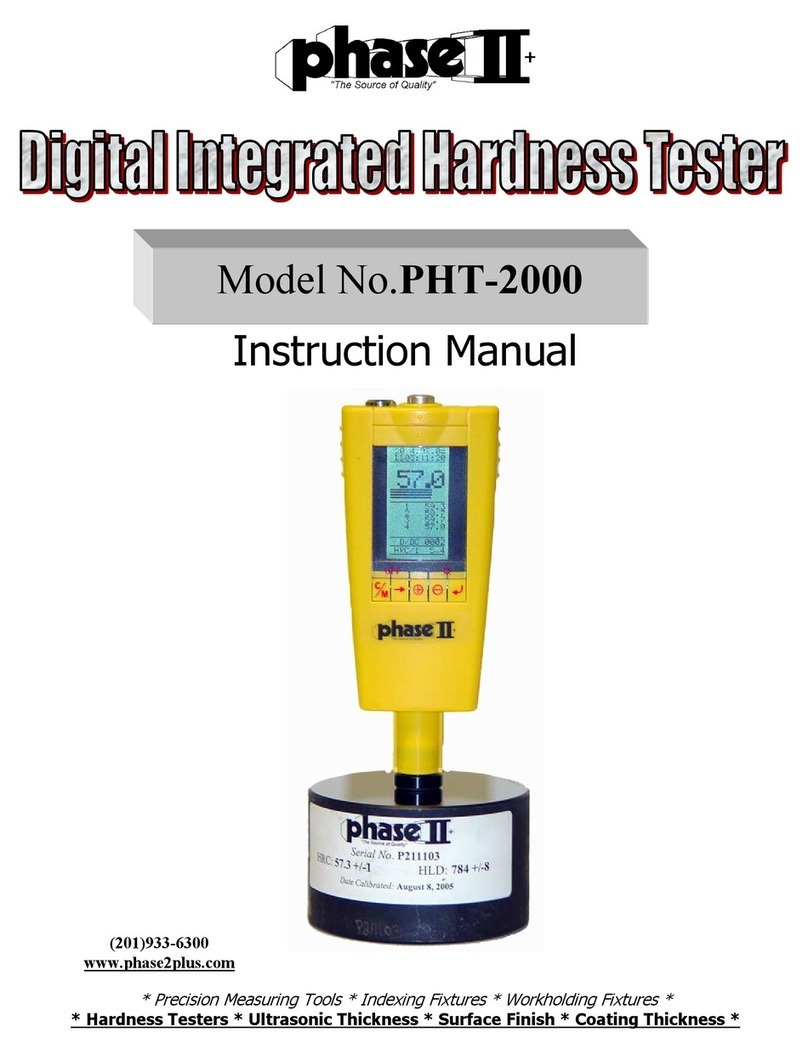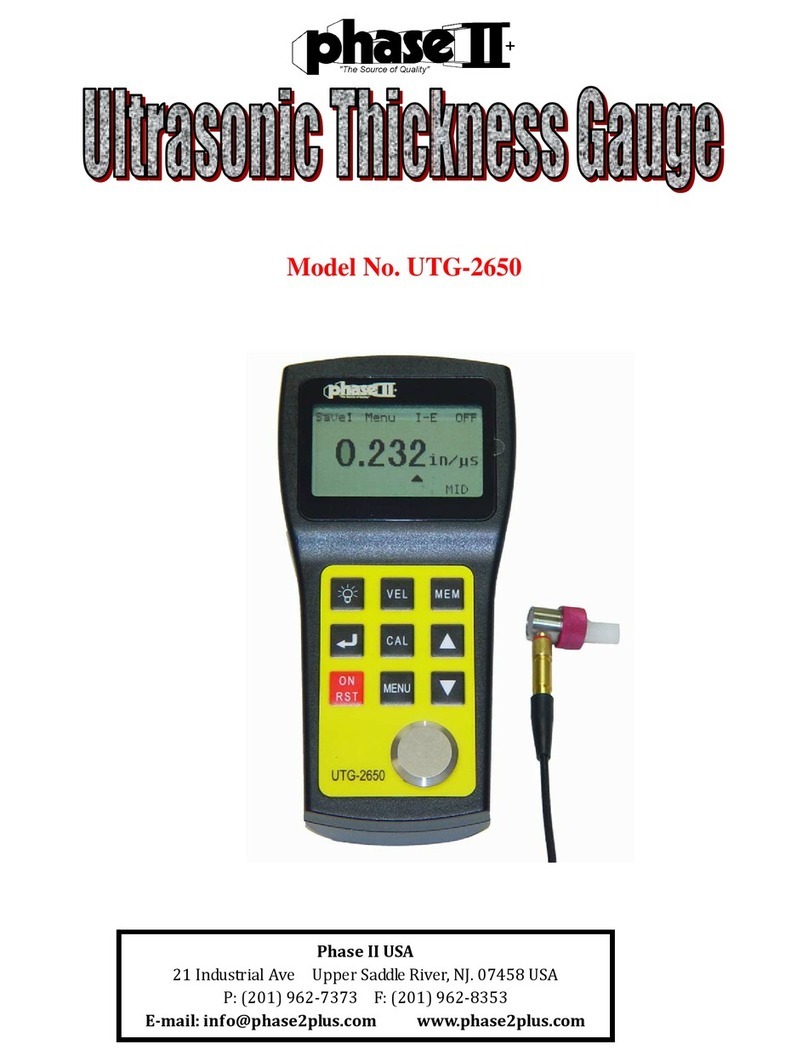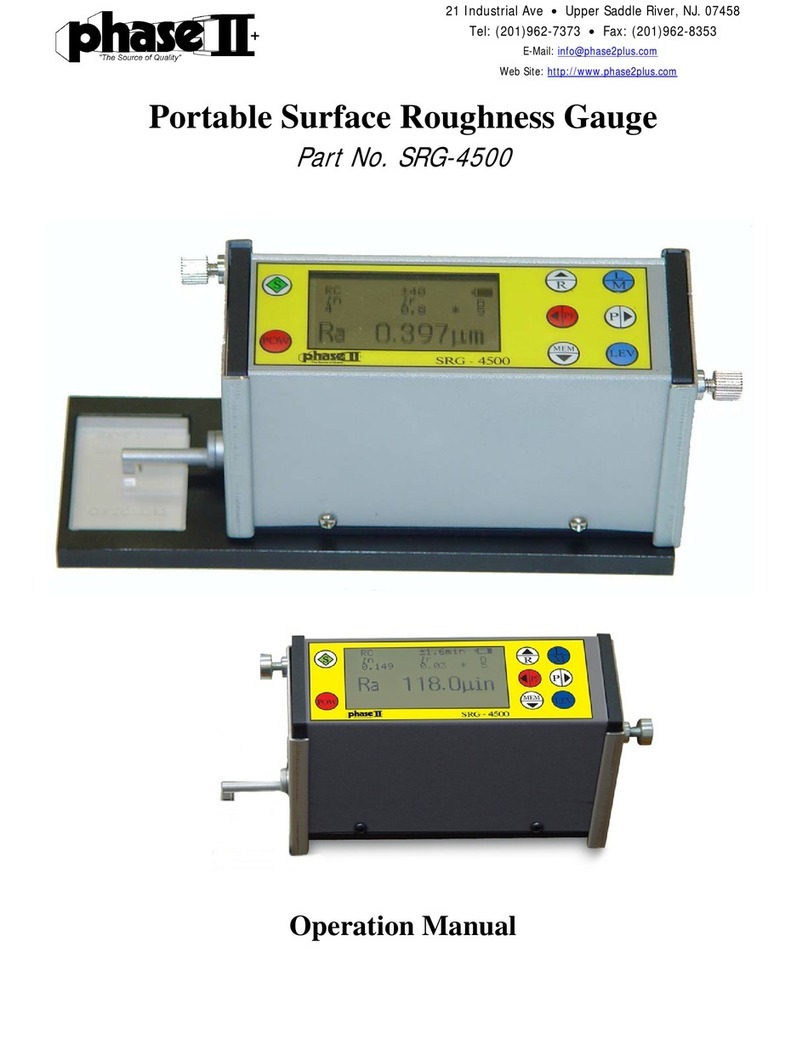
3Preparation
3.1TransducerSelection
TheUTG‐2900iscapableofperformingmeasurementsonawiderangeofmaterials,fromvariousmetalstoglass
andplastics.Differenttypesofmaterial,however,willrequiretheuseofdifferenttransducers.Choosingthe correct
transducer forajobis critical tobeingable to easily performaccurate andreliable measurement. TheUTG‐2900is
suppliedwitha5MHzdualsensorprobethatisconsideredtobethegeneralpurposeprobeofthegroup.The
followingparagraphshighlighttheimportantpropertiesoftransducers,whichshouldbeconsideredwhenselectinga
transducerforaspecificjob.
Generallyspeaking,thebesttransducerforajobisonethatsendssufficientultrasonicenergyintothematerial
beingmeasuredsuchthatastrong,stableechoisreceivedbythe gauge. Several factors affect the strength of
ultrasoundasittravels.Theseareoutlinedbelow:
InitialSignalStrength.Thestrongerasignalistobeginwith,thestrongeritsreturnechowillbe.Initialsignal
strengthislargelyafactorofthesizeoftheultrasoundemitterinthetransducer.Alargeemittingareawillsendmore
energyintothematerialbeingmeasuredthanasmallemittingarea.Thus,aso‐called“1/2inch”transducerwillemita
strongersignalthana“1/4inch”transducer.
AbsorptionandScattering.Asultrasoundtravelsthroughanymaterial,itispartlyabsorbed. If the material
through whichthe soundtravels hasanygrainstructure, thesoundwaveswillexperiencescattering.Bothofthese
effectsreducethestrengthof thewaves,andthus,thegauge’sabilitytodetectthereturningecho.Higherfrequency
ultrasoundisabsorbedandscatteredmorethanultrasoundofalowerfrequency.Whileitmayseemthatusingalower
frequency transducer might be better in every instance, low frequencies are less directional than high frequencies.
Thus,ahigherfrequencytransducerwouldbeabetterchoicefordetectingtheexactlocationofsmallpitsorflawsin
thematerialbeingmeasured.
Geometryofthetransducer. The physical constraints of the measuring environment sometimes determine a
transducer’ssuitabilityforagivenjob.Sometransducersmaysimplybetoolargetobeusedintightlyconfinedareas.
Also,thesurfaceareaavailableforcontactingwiththetransducermaybelimited,requiringtheuseofatransducer
with a small wearface. Measuring on a curved surface, such as an engine cylinder wall, may require the use of a
transducerwithamatchingcurvedwearface.
Temperatureofthematerial. When it is necessary to measure on surfaces that are exceedingly hot, high
temperaturetransducersmustbeused.Thesetransducersarebuiltusingspecialmaterialsandtechniquesthatallow
them to withstand high temperatures without damage. Additionally, care must be taken when performing a
“Probe‐Zero”or“CalibrationtoKnownThickness”withahightemperaturetransducer.
www.GlobalTestSupply.com
Find Quality Products Online at: sales@GlobalTestSupply.com












